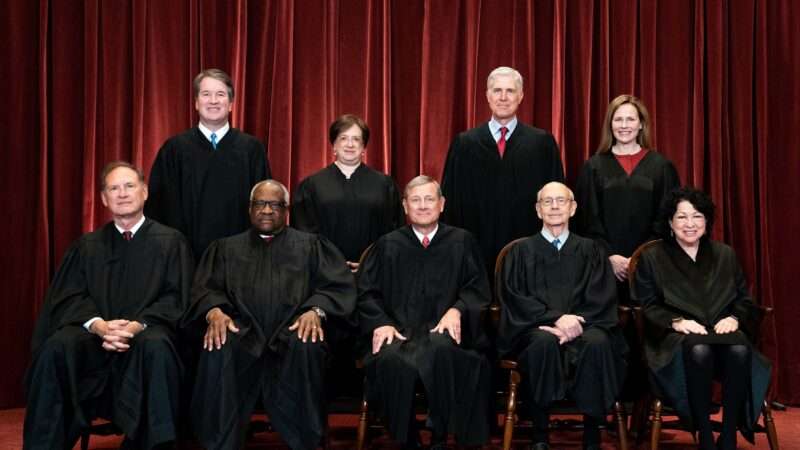One week ago, I lamented about Heller‘s sad bar mitzvah. On April 26, the Court denied review in three Second Amendment cases concerning the rights of non-violent felons. And the Court had twice relisted NYS Rifle & Pistol Association v. Corlett. At the time, I assumed the Court had denied review, and Justice Thomas was writing yet another dissent from denial of certiorari.
Once again, the shadow docket threw a curveball. This morning the Court granted cert in the case. But the Court only granted review to a limited question presented:
Whether the State’s denial of petitioners’ applications for concealed-carry licenses for self-defense violated the Second Amendment.
As soon as I saw the grant, I started to scratch my head. Why did the Court rewrite the QP? Here is how Paul Clement framed the issue for the petitioners:
Whether the Second Amendment allows the government to prohibit ordinary law-abiding citizens from carrying handguns outside the home for self-defense.
There are at least five major differences between Clement’s QP and the Court’s QP.
First, the Court’s QP focuses on the state’s decision to deny “concealed-carry licenses” to the petitioners. Clement’s QP challenged the law on its face, and as applied. Is the Court’s decision now limited to an as-applied challenge, rather than a facial challenge? Might the Court leave open the possibility that other may-issue regimes are unconstitutional? Are there some unique aspects of the New York law that would distinguish it from other may issue regimes? Is there the possibility the Court will need to remand for further explication of the regime? Is there some evidence that the state improperly denied licenses to these particular plaintiffs? Might there be some Due Process Clause argument? Then again, the QP references the Second Amendment, so a Due Process issue would not be squarely presented. I see this slippery change as a way for the Court to issue a very, very narrow decision that will leave the issue unsettled.
Second, the Court’s QP refers to a petitioner that could file an “application.” That category of individuals would seem limited to a natural person. One of the Petitioners is the New York State Rifle & Pistol Club. Is that party a petitioner that could file an “application”? Or will the Court limit relief to the named parties. Here, the Court may be trying to avoid the associational standing issue. This issue arose in June Medical with respect to abortion providers. Of course, in the Court’s standing jurisprudence, doctors who provide abortions for others would have third party standing, but organizations of people who personally exercise their Second Amendment rights would lack third party standing. Makes perfect sense.
Third, the Court’s QP refers to “applications for concealed-carry licenses for self-defense.” Clement’s QP refers to “ordinary law-abiding citizens from carrying handguns outside the home for self-defense.” The Court’s question is far more narrow. It only concerns “concealed-carry licenses.” Clement’s petition refers to carrying a gun more broadly outside the home. By stripping the reference to “outside the home,” the Court avoids resolving a thirteen-year old mystery: why exactly are “sensitive places.” Also, the Court’s question would close the door to a claim for open-carry. But why would the Court even consider this issue? New York does not permit open carry. I am nervous this QP is setting up a punt: a remand to consider whether permitting open carry would be consistent with the Second Amendment. Specifically, can New York prohibit conceal carry if it permits open carry? And by the time the case returns, there will be 17 Justices and the Court can deny review.
Fourth, Clement’s QP refers to “citizens.” There is no corresponding language in the Court’s QP. Did Justice Sotomayor object a right that would be limited to citizens? After all, the Second Amendment does not apply to citizens. It refers to the “Right of the people” (Judge Wood adopted that reading of the Second Amendment for the Seventh Circuit). And the Due Process Clause, which the McDonald plurality used for incorporation, refers to persons, not citizens. Yet, Justice Thomas’s controlling (?) McDonald concurrence relied on the Privileges or Immunities Clause, which is limited to citizens.
Fifth, Clement’s QP refers more broadly to “ordinary law-abiding citizens.” Again, there is no similar corresponding language in the Court’s QP. Here, the Court may not have wanted to get involved in the precise basis on the right to carry. What exactly does “ordinary law-abiding” mean? Does that category include non-violent felons? The Court ducked that issue last week.
Ultimately, I am conflicted about this grant. Part of me should be ebullient that the Court finally granted a real gun case. Yet, this strange rewriting of the QP has tempered my enthusiasm. I am jaded after thirteen years of being burned in Second Amendment cases. This grant may be the last time a nine-member Court decides a Second Amendment case. Any punt here will sweep Heller to what Justice Scalia called the “the dustbin of repudiated constitutional principles.”
We should get a decision by June 2022. Alas, that timing will not allow Randy and I to include the case for the Fourth Edition of our casebook, which should be released by October 2021.
Finally, one of my first blog posts in September 2009 focused on the question presented in McDonald. That post, which went viral thanks to links on Volokh and Instapundit, put my blog on the map. It has been a fun run over the past thirteen years!
from Latest – Reason.com https://ift.tt/3vjs1pb
via IFTTT



